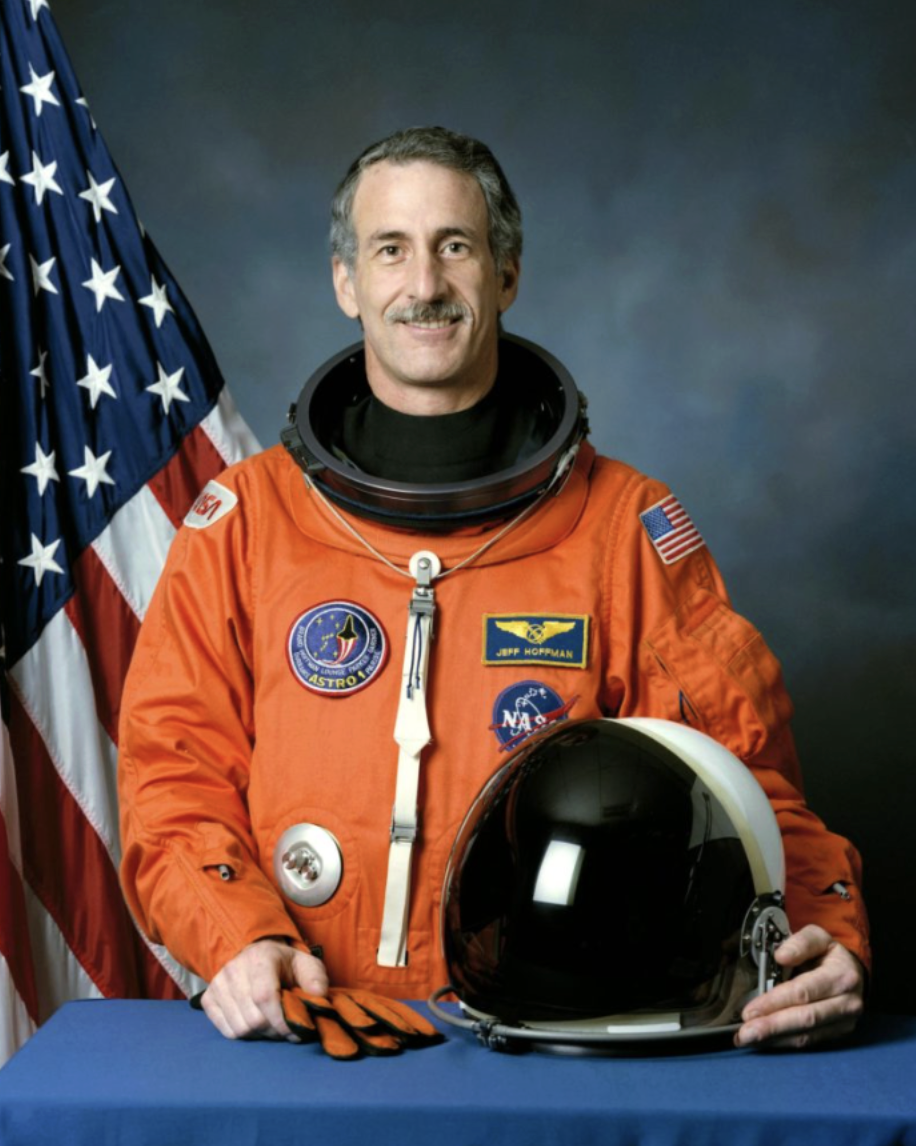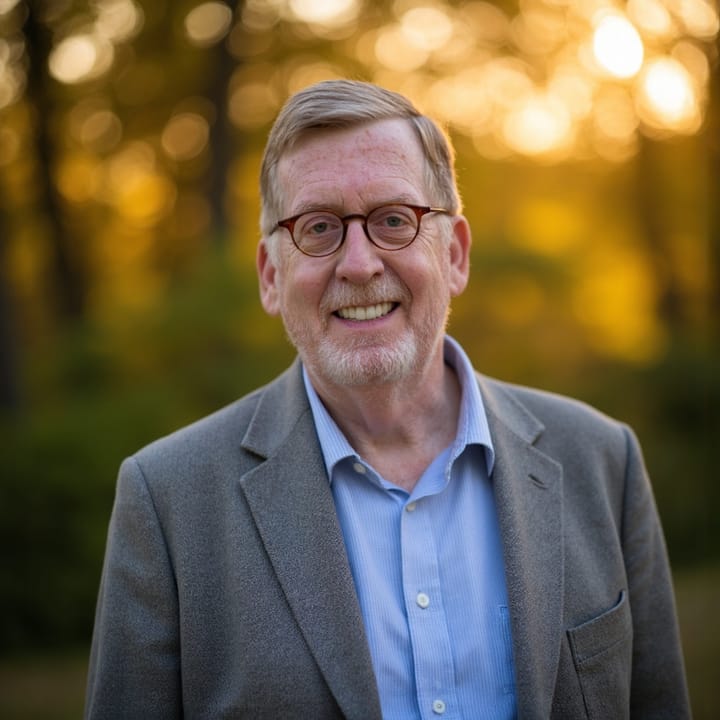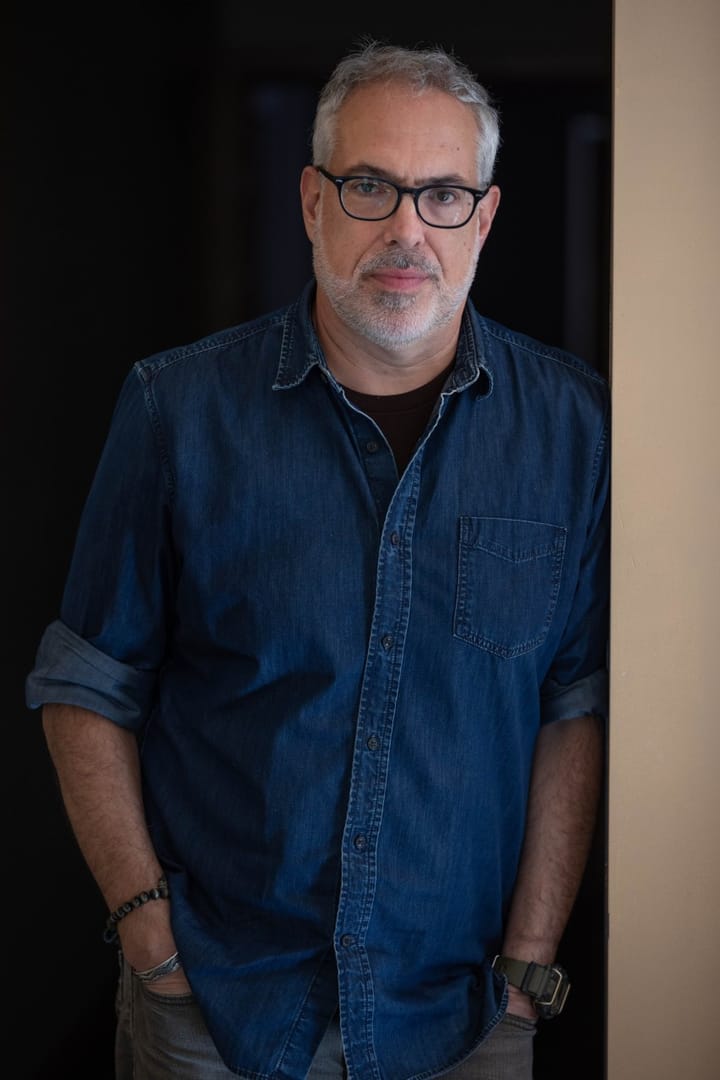Dedicating A Life Beyond This World — Alumni Profile, Jeffery Hoffman ’66
From nights at the Amherst observatory to missions aboard the Space Shuttle, Jeffrey Hoffman ’66 turned space wonder into a lifelong pursuit of scientific discovery.

Jeffrey Hoffman ’66 is an astrophysicist and former NASA astronaut who made history as one of the first astronauts to repair the Hubble Space Telescope. Throughout his career, he completed five spaceflights that helped shape the future of space exploration. Throughout his life, Hoffman has devoted himself to discovery, learning, and teaching, from peering through the college’s observatory dome while at Amherst to his current role mentoring the next generation of aerospace engineers at Massachusetts Institute of Technology.
Space Dreams That Reached Amherst
Hoffman grew up in the suburbs of New York City during the 1950s, a transitional era when space exploration was shifting from the realm of science fiction comics to the real world, as public fascination with space began to build in the years leading up to the Sputnik launch. “I was a little boy [at] the birth of the Space Age,” he said. “When I wasn’t watching Buck Rogers or Flash Gordon, I was at the planetarium with my parents.”
When the Soviet Union launched Sputnik in 1957, Hoffman became more interested in space. “I was in junior high school and, like every red-blooded American kid, I thought, ‘Gee, that’d be great — to be an astronaut,’” Hoffman said.
By the time he was choosing colleges, Hoffman knew he wanted to study astronomy. “I wanted my undergraduate time to be at a small college, and Amherst was great,” he said. “It was all-male back then. Of course, it’s very different from the way it is now.”
During Hoffman’s time at Amherst, the astronomy department was small, typically producing only one major a year: In Hoffman’s class, he was that one. Despite the solitude, he pushed himself to complete a senior thesis, becoming the first Amherst student to use a computer for his thesis, despite there not being one available for him to use on campus.
“I got special permission to keep my car on campus my senior year because I had to go to [the University of Massachusetts, Amherst] three or four times a day,” he said.
Outside the lab, Hoffman found an unlikely home on the ski slopes, a pastime he still enjoys today. “I joined the ski team,” he said. “I wasn’t much of an athlete growing up. I never thought I’d win an athletic letter, but I [still] have an Amherst ‘A!’”
From Amherst to NASA
After graduating from Amherst in 1966, Hoffman went on to pursue a doctorate in high-energy astrophysics at Harvard University, where he worked on the design and flight of a balloon-borne low-energy gamma-ray telescope, a telescope that is carried into the upper atmosphere, typically the stratosphere, by a large balloon to observe space using gamma rays. The telescope allows scientists to capture images of the cosmos otherwise obscured from view.
After completing his doctorate, Hoffman received a fellowship from Harvard that sent him to England’s University of Leicester in 1972, one of the only x-ray astronomy centers in the world at the time. “The field I was going into, you have to study from above the atmosphere,” he said. “We were sending our experiments up in sounding rockets … I flew one rocket from Australia and one rocket from the west coast to the southwest coast of Spain.”
It was in the United Kingdom that Hoffman met his wife: “I ended up meeting a very lovely English girl. I was only going to stay [in England] for a year, but after I met my wife-to-be, I [stayed]. I’m certainly glad I made that choice, because that’s where I met my wife … My wife changed my life.”
After spending four years in the United Kingdom, finally, in 1975, Hoffman returned to the United States and joined the Massachusetts Institute of Technology’s (MIT) Center for Space Research, where he worked for three years. In 1975, NASA was conducting initial testing of what was then a brand-new vehicle — the Space Shuttle. “The Space Shuttle … had a crew of up to seven, but they only needed two pilots, so that opened up the astronaut selection process to scientists, engineers, [and] medical doctors. People who didn’t have to be pilots,” he said.
Hoffman saw his opening. “I saw NASA’s call for applicants. I said, ‘Hey, they want scientists. I’m a scientist. I’ll apply, along with 8,000 other people.’ But I was lucky enough to get selected,” Hoffman said. “And of course, that changed my life entirely.”
The Spacewalk That Made History
Over his two decades as a NASA astronaut, Hoffman completed five missions aboard the Space Shuttle, spending hours in orbit and helping redefine what spaceflight could achieve. His first mission, in 1985, became historic. “We were just supposed to launch two satellites and come home, but one of the satellites didn’t turn on,” he said. “They came up with a plan for us to do a spacewalk … NASA had never done an unplanned spacewalk, ever, in its whole history. But they sent us out to fix the satellite to do something we had never trained to do, and that was an incredible experience.”
That experience prepared him for what became the defining moment of his career: the 1993 rescue of the Hubble Space Telescope. “When it was first put in orbit, it turned out it couldn’t focus properly, which was a disaster for NASA, for the astronomy community,” he said. “It was a real scandal, [but] we went up and fixed it. We put in corrective optics.”
The telescope’s success transformed modern astronomy. “It’s really rewritten astronomy textbooks many times over, and basically changed our view of the universe with the discovery of dark matter,” he explained. “Dark matter, we kind of know where it is, but we don’t know what it is. And dark energy, we don’t have a clue. Everything that you and I are made of, all the atoms and things that we study in physics and chemistry, that’s only 4% of the universe. So it’s pretty humbling ... Most of the universe, we don’t have a clue what it is.”
Closing His NASA Chapter
After his fifth flight in 1996, Hoffman faced an unexpected choice. “NASA offered me a sixth space flight because they needed people who knew how to do spacewalks to go and start building the International Space Station,” he said. “[However], I [also] got selected for this job in Europe, which required going over and living in Paris for four years at government expense — not too shabby a deal.”
NASA gave him an ultimatum. “They said, ‘All right, Jeff, you g[et] to choose. You can go to Paris or you can go to space, but you can’t do both,’” he recalled. “So [my wife and I] chose Paris, and we had a wonderful four years there.”
Eventually, Hoffman returned to academia. “Towards the end of my four years in Paris, I got introduced to the head of the Department of Aeronautics and Astronautics at MIT,” he said. Hoffman explained that the department head thought that, if they were going to teach about space flight, “it’d be a good idea to have somebody who’s actually done it.”
Hoffman joined MIT’s faculty in 2001. “My wife thought she was signing up to be a professor’s wife [when we first got married],” he said. “Then, I went off to NASA for, you know, 25 years. So her joke is, ‘You know, in academics, most professors get their tenure in seven years;’ it took me 30.”
Landing Back in Academia
Today, Hoffman is a senior lecturer at MIT, teaching courses that range from freshman seminars on high-altitude ballooning to graduate classes on spacecraft design. His courses are, unsurprisingly, very popular. “Some of the students clearly sign up because they hear, ‘Oh yeah, an astronaut is teaching this class,’” he said. “Wherever I can, I bring in my astronautical or other scientific experience [because] that makes it more real for the students.”
During his two decades at MIT, Hoffman has also contributed to numerous research projects. One of his proudest achievements involved the Mars mission. “I was the deputy principal investigator for an experiment that was sent to Mars on NASA’s Perseverance rover,” he said. “It demonstrated that we can make oxygen on Mars by taking carbon dioxide from its atmosphere.”
For Hoffman, the combination of teaching and research has shaped his view of what it means to be both a scientist and an engineer. “For a scientist, you’re trying to understand something about how the universe works that nobody has understood before,” he said. “For an engineer, your greatest triumph is to use that scientific knowledge to create something that has never existed. They both need each other — but they are different.”
A Life-Long Career Shaped by Amherst
As he reflects on his many accomplishments, Hoffman insists that Amherst shaped his life more than any technical training ever could. “Amherst taught me how to think and how to communicate. That’s the foundation of everything I do.”
Looking ahead to his class’s 60th reunion, he hopes Amherst continues to nurture students with an eye toward curiosity and innovation, even those who may not yet know what engineering is.
“Amherst doesn’t make any pretense of being an engineering school, but it would be nice if there were some [more] ways to advise students who might be interested,” he said. “In high school, very few students learn anything about engineering.”
Ultimately, what continues to drive Hoffman is simple: the joy of teaching.
“Why do I keep teaching? Because I love working with students,” he said. “I have a lot of things I like to share, and as long as students are interested in listening, I’m happy to keep teaching as long as I feel I’m doing something useful for them.”





Comments ()